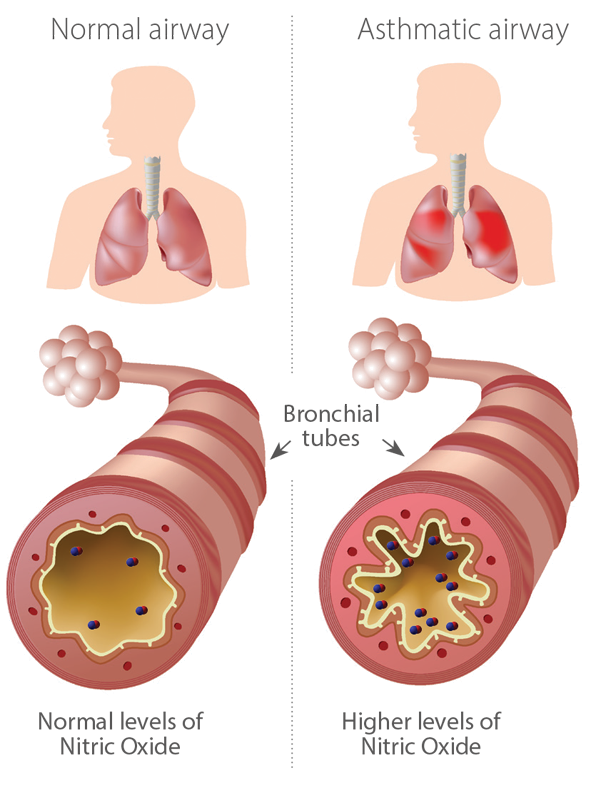Asthma and FeNO testing explained

What is FeNO testing?
It is a simple breath test that measures the level of Nitric Oxide Concentration that the body naturally produces in the airways.
The test is very simple to perform and easy to interpret with a single value reading in parts per billion (ppb).1,2 Unlike spirometry, it requires minimal patient compliance and respiratory effort.
A positive FeNO reading in conjunction with spirometry and peak flow tests can help confirm a diagnosis of asthma in a patient and/or support ongoing treatment for the disease.1

Why FeNO testing?
The benefits of FeNO testing
Minimal respiratory effort required
A FeNO test is easy to interpret
Treatment
response
Manage mis-diagnosis of asthma
References
1. Ricciardolo F. Multiple roles of nitric oxide in the airways [Internet]. Multiple roles of nitric oxide in the airways. 2017 [cited 27 March 2017]. Available from: http://thorax.bmj.com/content/58/2/175.info
2. Feng X. Fractional Exhaled Nitric Oxide in Relation to Asthma, Allergic Rhinitis, and Atopic Dermatitis in Chinese Children: Journal of Asthma: Vol 48, No 10 [Internet]. Tandfonline.com. 2017 [cited 27 March 2017]. Available from: http://www.tandfonline.com/doi/abs/10.3109/02770903.2011.627487
3. Andrew D. Smith, Jan O. Cowan, Sue Filsell, Chris MacLachlan, Gabrielle Monti-Sheehan, Pamela Jackson and D. Robin Taylor. Diagnosing Asthma: Comparisons between Exhaled Nitric Oxide Measurements and Conventional Tests. Am J Respir Crit Care Med Vol 169. pp 473-478, 2004.
4. An Official ATS Clinical Practice Guideline: Interpretation of Exhaled Nitric Oxide Levels (FeNO) for Clinical Applications. Am J Respir Crit Care Med Vol 184. pp 602-615, 2011.
5. P R. Airway inflammation in patients with symptoms suggesting asthma but with normal lung function [Internet]. ERS Journal. 2017 [cited 27 March 2017]. Available from: http://erj.ersjournals.com/content/erj/16/5/824.1.full.pdf
6. David T. Misdiagnosis of COPD and Asthma in Primary Care Patients 40 Years of Age and Over: Journal of Asthma: Vol 43, No 1 [Internet]. Tandfonline.com. 2017 [cited 27 March 2017]. Available from: http://www.tandfonline.com/doi/abs/10.1080/02770900500448738
7. D R Taylor, MW Pinenburg, A D Smith and J C D Jongste. Exhaled nitric oxide measurements: clinical application and interpretation. Thorax 2006;61:817-827.

